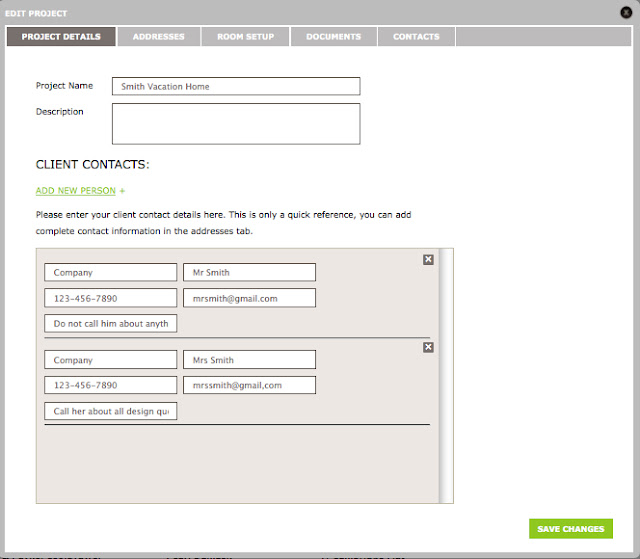How to Read the Cards
Now that we have a general idea of each social style (previous article "Build Rapport Quickly and Drive up Your Closing Ratios!"), let’s look at how to spot styles in others. Remember that we’re all complex, unique individuals – made up of aspects of all styles. What we’re going to do is to uncover clues about someone’s style(s) and form an opinion. It takes practice. But it’s well worth the effort.
Clues can come from four areas: Clothing, Body Language, Surroundings, and Speech. Sometimes the clues will help us determine who someone is; sometimes they’ll help us figure out who they’re not.
Clothing: Not all styles will give you clues through their clothing, but often, Analyticals and Expressives will. Analyticals will frequently dress conservatively - clothing pressed, buttoned-up, and muted colors. Expressives, on the other hand, often wear very colorful, sometimes outlandish clothing. Their clothing will often stand out in a crowd. If a prospect isn’t wearing something colorful (especially in a business setting), chances are, they aren’t an Expressive. The other two styles, Commander and Stabilizer, generally won’t offer clues through their clothing.
Body Language: You can pick up some great clues here. Both Analyticals and Stabilizers tend to be introverted, and reflect this by the way they interact with others. They’ll often sit back in their chair while talking to you. They hold their feelings close to the vest, so to speak. Commanders and Expressives, on the other hand, tend to sit forward when interacting. Notice how some people will move into your space and even touch you on the arm, while others will keep their distance during a conversation and may even cross their arms? The ones that come closer and seem more open are the Commanders and Expressives, while the more distant ones are the Analyticals and Stabilizers.
Surroundings: How an individual keeps their office or home can offer excellent clues as to their predominant social style. As you might expect, an Analytical’s space will generally be tidy, neat, and organized. A place for everything and everything in its place! Expressives, on the other hand, aren’t exactly known for their neatness. If someone’s office seems cluttered or filled with fun, playful items, they’re probably an Expressive. If their space is practical, but sparse in its trappings, you may be with a Commander. If they seem to focus on family and relationships in the things surrounding them (like a family picture wall) you could be dealing with a Stabilizer. Remember, these are just clues, not absolutes. Try to gather as many clues as you can before making a decision as to their social style(s).
Speech: One of the easiest ways to spot someone’s style is through their speech. By that, I mean the pace of speech, the volume of their speech, and the words they use. Analyticals speak with a measured pace, maintain an even, almost monotone, volume, and will use words that they best relate to. You’ll often hear them use phrases such as: "let me have the details", "I need more facts", or "let me think about it." Commanders will speak at a much more rapid pace, much louder than an Analytical, and will use expressions like: "what’s the bottom line here?", "get to the point" or "how long will this take?" Expressives often speak rapidly, loudly and expressively, and will often laugh and smile. They love to tell stories and jokes, and will generally talk much more than the other styles. Stabilizers will speak more slowly and softly, and often will start conversations with discussions of leisure time or family. They may use words and phrases like: "help", "team", or "work together" Picking up clues takes practice. The more you practice, the better you’ll get. Practice wherever you are – in line at a coffee shop or at the bank, waiting at restaurants or with the wait staff, with coworkers, or at a party. One of my favorite ways to get an indication about a prospect is to listen to their voicemail message when you call. After you’ve made a determination as to their social style(s), keep observing and see whether on-going clues confirm your guess or contradict it. As your ability to read others improves, you’ll be able to read someone and then predict how they’ll react to certain situations.
Playing Your Hand

Now that you have a better understanding of the four social styles and how to identify them, how can you use that knowledge to improve your ability to build rapport and close more sales? Remember not to follow the Golden Rule! (Do unto others, as you would have them do unto you.) Instead of communicating in the style you’re most comfortable in, work on communicating in the style they’re most comfortable in. With Analyticals, use facts and figures. Details matter. They’re the ones that, when they say, "Let me think about it," they really mean it! Don’t go too fast, be too pushy, be inaccurate, or be too light-hearted. With Commanders, get to the bottom line. Don’t burden them with the details (yet), just have them ready if asked for. Don’t let your presentation ramble – stay on track and make your point. They don’t want their time wasted. With Expressives, details make them glassy eyed. Keep your presentation light, colorful, and somewhat entertaining. They’ll buy because they had a good time with you, rather than on the logic. With Stabilizers, relationships rule. If you get right into your business, they won’t connect with you. They want to connect with you. They want to have you understand them and they want to understand you. Don’t rush them, and "work together", to solve a problem.
Summing Things Up
If you truly want to have a thriving book of business, you need to understand people and have them connect with you. Study the traits of the four social styles (Analytical, Commander, Expressive, Stabilizer). Practice picking up clues from prospect’s clothing, body language, surroundings, and speech. Then, make a conscious effort to modify what you say and how you say it to match your prospects
social style(s). You’ll connect more easily and comfortably, and you’ll see your closing ratios climb!
By Michael Beck
Written by Michael Beck, "Head Zookeeper" at http://www.ClientMonkey.com , a marketing strategies website dedicated to getting more clients, making more money, and having more fun! Receive a FREE program on recruiting & prospecting success at: http://www.PowerRecruitingandProspecting.com
Mr. Beck's credentials include an MBA from the Wharton School of Business along with degrees in Engineering from the University of Pennsylvania. Michael has held a variety of executive positions including CEO, COO, CFO, EVP, VP of Finance, and VP of Business Development. In addition, he worked several years overseas as a Business Advisor to a member of the Royal Family of Saudi Arabia. He is a Founding Member of the International Association of Coaches and a Past-President of the Denver Coach Federation.











.jpg)









